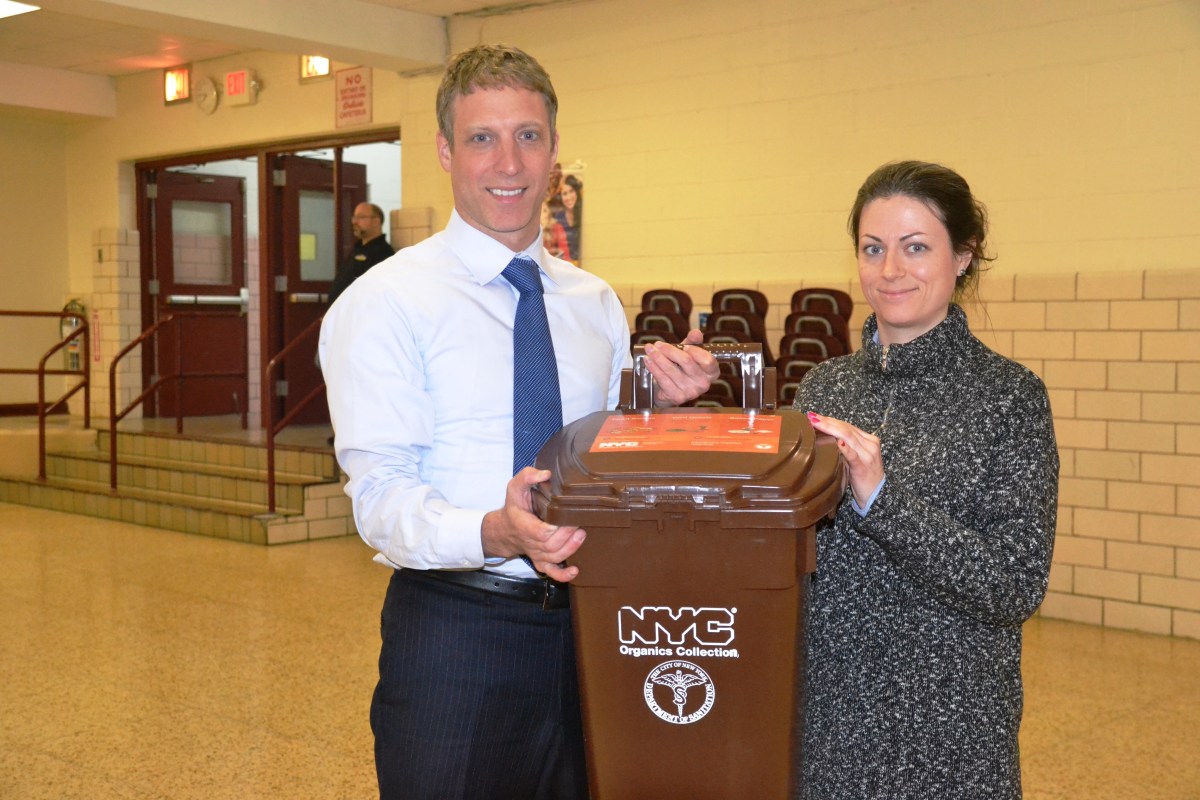Get ready to see more brown compost bins in Queens starting the week of May 18, as more areas of Maspeth and Middle Village are added to the city’s organics waste pilot program.
The NYC Department of Sanitation’s (DSNY) voluntary curbside food and yard waste recycling program is expanding into both neighborhoods and communities in Brooklyn, the Bronx and Staten Island later this spring.
The program, which began in May 2013, currently serves more than 100,000 households and 700 schools throughout all five boroughs and has collected more than 6,500 tons of material. This latest expansion will add approximately 35,000 more houses to the program.
“Organic materials make up about a third of our trash,” DSNY Commissioner Kathryn Garcia said. “When you [recycle] your food and yard waste, you decrease the amount of garbage going to landfills and help create a greener and healthier New York City.”
All single-family homes and buildings with nine or fewer units will automatically be enrolled in the voluntary program. Residential buildings with 10 or more units may apply to participate. All eligible households will receive a starter kit, which includes an indoor kitchen container, an outdoor brown bin or a larger bin to share for a building with three to nine units and an instructional brochure.
To participate, residents should place their food scraps and soiled paper products, such as paper napkins and paper plates, into the kitchen container, then transfer the material into their outdoor bin for collection on their pickup day.
Examples of items that may be placed in the bin include food scraps such as fruits, vegetables, egg shells, pasta, tea bags, coffee grounds and filters, baked goods, meat and bones; flowers and house plants; and food-soiled paper such as paper towels, napkins and paper plates.
Some items that may not be placed into the bins include plastics of any kind, even if labeled biodegradable, liquids, foam items, animal waste, cigarettes and ashes, and medical waste.
The collected organic material is managed both locally and regionally, with some of the waste being turned into compost and being used locally by greening groups such as urban farmers, community gardeners and street tree stewards to rebuild the city’s soil.
RECOMMENDED STORIES


































